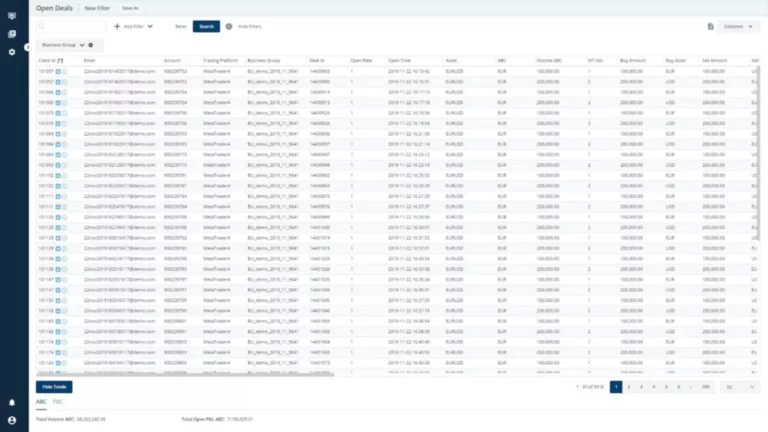Content
The answer to whether investing is better than day trading will depend on your goals and mindset. If you have time, energy and interest in tracking economic and market news on trading and investing difference a regular basis (daily if you’re day trading), then trading can be a fun, exciting and challenging way to make money. In essence, trading suits those who thrive on active decision-making and can dedicate time to mastering market dynamics. Investing, by contrast, is ideal for individuals focused on long-term wealth accumulation with minimal effort.

How’s your overall financial situation?
The same is true with investing and trading, though investing may help you pay less in taxes. That’s because any profits you see on individual stocks, ETFs, and mutual funds are taxed based on Proof of work the amount of time you hold them. For investments you own for less than a year, like those you trade over short periods, you’ll likely pay taxes on the earnings at the same rate you would on your paycheck.
Trading Vs. Investing: Leverage
The length of time that an investor and trader hold their assets diverges. Traders, on the other hand, normally hold onto their assets for short time frames. Traders might operate on extremely short timeframes, holding investments for minutes, hours, or days. Others may extend to a few years, but speed and flexibility define trading. Investors, on the other hand, have a much longer view, often holding onto investments for decades without making frequent adjustments. https://www.xcritical.com/ This patience aligns with their overarching goal of compounding returns over time.

The case for buying options instead of stocks
- For example, you could have 90 percent of your portfolio in ETFs and the remainder in a few stocks that you enjoy following.
- This section aims to guide you in making an informed decision that aligns with your objectives.
- In essence, stock market trading is about spotting opportunities, timing actions, and making quick moves to capitalize on market fluctuations.
- Trading profits, on the other hand, are considered income and are taxed as such.
- Trading involves buying and selling securities within small time frames, usually ranging from seconds to weeks.
- Traders focus on short-term price fluctuations and try to profit from them by getting in and out of trades quickly.
Knowing them can help you determine which one is best for your money and overall financial strategy. This style is for investors who are ready to dedicate time to researching and analyzing opportunities. While it has the potential for higher returns, it also comes with higher costs, more risks, and the difficulty of predicting the right time to buy or sell. The main lure of trading in the foreign exchange markets is that minimal investment is required. Accounts can often be opened for as little as $100 and will allow individuals to day trade global currencies, indexes, and commodities. With the forex market, the trader is actually exchanging one currency for another, possibly in an account denominated in yet another currency.
Trading vs Investing: Unraveling the Best Approach for You
Both approaches have distinct advantages and require careful consideration to optimize financial outcomes. Trading requires a hands-on approach, constant monitoring, and quick decision-making to take advantage of market movements. It involves higher risk due to the short-term nature of trades compared to long-term investments, which focus on overall market performance.

In stock market investing, thorough research, patience, and a long-term perspective are essential. It’s about strategically selecting companies with strong growth potential and allowing your investments to grow steadily over time. Trading and investing might sound like interchangeable words for trying to grow your money in the stock market. But they mean different things—and come with their own set of risks and potential benefits.
Trading can also offer tax advantages through strategic timing of gains and losses. The long-term likelihood of building wealth, combined with low costs and minimal time commitments, makes investing an attractive option for those seeking steady growth without constant oversight. Investing is the strategic allocation of funds with the primary goal of accumulating wealth over an extended period. Unlike trading, which focuses on short-term gains, investing involves buying and holding assets for the long term, allowing them to appreciate through capital appreciation, dividends, and interest. But buying and selling investments becomes riskier the shorter your timeline is and the more you concentrate your money into just a handful of holdings, 2 challenges traders often face. The stock market has historically recovered from every downturn it’s experienced—but it hasn’t always done so quickly or predictably.
In this case, it is wise to buy into the sector, rather than a specific stock, since it reduces your risk. You can still benefit from growth in the overall sector, especially if it outperforms the overall market. If the drivers of the performance of the company are more difficult to understand, you might consider the ETF. These companies may possess complicated technology or processes that cause them to underperform or do well.
It’s a great (and often inexpensive) way to buy a collection of stocks. A stock represents a fractional ownership interest in a business and typically trades on an exchange, in the case of a publicly traded company. When you own a stock, you’re investing in the success of that company — and only that company. When deciding whether to pick stocks or select an ETF, look at the risk and the potential return that can be achieved. Stock-picking offers an advantage over ETFs when there is a wide dispersion of returns from the mean.
When such an environment is determined for a particular sector—and where there is much return dispersion—single-stock investments can provide a higher return than a diversified approach. Reducing the volatility of an investment is the general method of mitigating risk. Most investors give up some upside potential to prevent a potentially catastrophic loss. An investment that offers diversification across an industry group should reduce the portfolio’s volatility. In the trading world, traders have the flexibility to engage in a diverse assortment of assets, including stocks, currencies, commodities, crypto, and other financial derivatives such as options and futures.
This means the percentage gain on a winning options trade can be much larger than a return on a long stock position. And in addition to utilizing these strategies for directional speculation, options can be used to generate income, acquire shares at a predetermined price and hedge against existing positions. For one, options are contracts and they come with an expiration date, demanding astute decision-making with an emphasis on timing. As the clock ticks, the value of the options may erode, making prompt action essential to limit risk and capitalize on opportunities. Another perk is that when we buy stock we become a stakeholder in the company, granting us the privilege to participate in crucial decision-making processes. Furthermore, shareholders may receive dividends, providing an opportunity to generate passive income.
You can trade shares, indices, forex, etfs, bonds, commodities, and IPOs. Investing requires careful research, analysis of financial statements, evaluation of market trends and understanding of risk and return trade-offs. It involves assessing the fundamental value of an asset and making informed decisions based on factors such as the company’s financial health, industry trends and macroeconomic conditions. Successful investing often involves a long-term perspective, patience and the ability to ride out market volatility. It can help individuals grow wealth, save for retirement, fund education or achieve specific financial goals.
Traders employ various strategies, such as day trading, swing trading or momentum trading, relying on technical analysis, charts and indicators to make trading decisions. Swing traders focus on capturing medium-term price movements; day traders aim to profit from intraday price fluctuations; and position traders take longer-term positions based on fundamental analysis. Each employs different techniques and timeframes to navigate the market and execute their trading strategies. Trading refers to buying and selling financial instruments, such as stocks, bonds, commodities, currencies, or derivatives, to make a profit. It involves the exchange of these assets between buyers and sellers in various markets, such as stock exchanges or electronic trading platforms.
For these sectors, the overall performance is fairly similar to the performance of any one stock. In this case, investors need to decide how much of their portfolio to allocate to the sector overall, rather than pick specific stocks. Sectors that have a narrow dispersion of returns from the mean do not offer stock pickers an advantage when trying to generate market-beating returns. The retail industry is one group in which stock picking might offer better opportunities than buying an ETF that covers the sector.